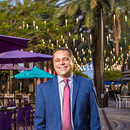Editor's Note: This is the sixth article in "Street Smarts," an ongoing StateTech series that highlights local stories of smart city projects, from development to execution. Check out the first article in the series on Montgomery, Ala., the second on Colorado Springs, Colo., the third article on Racine, Wis., the fourth article on Columbus, Ohio, and the fifth article on Chattanooga, Tenn.
Established by George Merrick in 1925, Coral Gables, Fla., was one of the first planned communities in the United States. It was inspired by the City Beautiful movement of the late 1800s and early 1900s, a concept built on the premise that a city’s design cannot be separated from social issues.
Nearly a century later, the city of more than 50,000, adjacent to Miami, has extended this concept with a number of smart city initiatives designed to improve the services it offers residents, businesses and visitors. To achieve this mission, Coral Gables provides an online portal that delivers convenient, real-time access to data from a number of systems and sensors in an effort to improve overall quality of life in the city.
“Over the years, technology has become more and more useful to help deliver services in a smarter way,” says Raimundo Rodulfo, the city’s IT director. “So, we started a digital transformation process over the years to help connect to the citizens and also become more efficient by replacing obsolete or inefficient processes with more digital and automated processes.”
Large and small cities are identifying the smart city projects that best serve their communities and fit their budgets. In doing so, Coral Gables and other municipalities implement plans that support more resilient and efficient infrastructure while putting actionable data into the hands of their citizens. According to Chris Holley, manager of research and innovation for the Florida League of Cities, Florida’s cities are looking toward the future in their own individual and unique ways.
“Some of the most common project examples tend to be streetlights, smart parking or improvements with digital service delivery,” Holley says. “With this being said, the variety of services cities provide — utilities, police, etc. — often drive the types of early projects and pilots selected.”
“These can range from smart meters and public safety deployment based on crime analytics to even a more robust fiber and wireless network for safer and more connected communities,” he says.
Coral Gables Creates a Strong Network Backbone
To quote the Center for Digital Government, Coral Gables “exemplifies the data-driven characteristic of a digital city with their business intelligence portals and dashboards, transparency and open data portals, smart city projects with IoT sensors and platforms, and utilization of Lean Six Sigma processes.”
Because none of that would be possible without a means of communication, the city’s first order of business was to create a resilient network to withstand potential disasters upon launching a smart city initiative in 2016.
“We are vulnerable to hurricanes, and we have been impacted by quite a few over the years. So, becoming resilient is not a luxury,” Rodulfo says. “We engineered our network to be high-speed so we can support a lot of digital services to the citizens, but we also built it following engineering best practices from the Institute of Electrical and Electronics Engineers and other organizations.”
The result is a multilayered network with strong colocation and disaster recovery plans, which has allowed Coral Gables to continue providing critical services during hurricanes. The network was put to the test during Hurricane Irma, which took down communication lines and fiber optics while leaving 80 percent of the city without power in September 2017.
“Even though we had that scenario, we never lost critical communications for first responders because our network has become smarter and more resilient over the years,” Rodulfo says.
MORE FROM STATETECH: Find out how 5G networks will impact smart cities.
Smart City Projects Include Environmental Monitoring
After establishing a communications network, Coral Gables began initial projects, including the implementation of vehicle and pedestrian traffic sensors, smart policing tools such as license plate readers and CCTV cameras, and smart lighting, which contributes to creating a safer environment in the city.
“We can now tell if there’s a streetlight out on our principal commercial street, which is Miracle Mile, and we can have that taken care of as quickly as possible,” says Eduardo Santamaria, assistant city manager for Coral Gables.
Since that time, the city has deployed environmental monitoring systems. In collaboration with researchers at Florida International University, Coral Gables has implemented sensors in its canals and waterways to monitor both water levels and quality.
“We love the fact that we can, in real time, see the depth of our waterways, the level of sedimentation, how much dissolved oxygen is present in the water and a lot of other metrics,” Santamaria says. “That is an excellent source of information for us to use in being stewards of these navigable bodies of water.”
In addition to monitoring the water, Coral Gables is also utilizing air quality monitoring sensors along different roadways to monitor carbon emissions.
“As we see more electric vehicles, we expect to see a decrease in the carbon emissions from those sensors,” Rodulfo says.
READ MORE: Find out how LoRa and LoRaWAN help smart cities.
Traffic Data Helps Coral Gables' Urban Planners, Businesses
To aggregate Internet of Things data in the cloud, the Coral Gables IT Department is implementing a Cisco Kinetic IoT platform to connect devices and then analyze their collected data. Microsoft Azure is among the cloud services deployed by the city to support data center operations.
The city integrates vehicle and pedestrian traffic with third-party systems to provide up-to-the-minute information to help ascertain the fastest routes from one location to another. Historical data trends have also been helpful for planning.
“With all that data, urban planners can see how traffic evolves over the years, and we are correlating that data in different ways, including getting data from Waze, which allows us to get the data from drivers directly,” Rodulfo says. “All that data helps improve traffic because it is used by traffic engineers to design crosswalks, design better roads and solve issues with traffic patterns.”
For businesses, data on peak pedestrian traffic time can aid in determining operating hours and staffing needs, for example, and provide insight into what promotions or events are beneficial for business.
“That data is very useful, for example, for small businesses. Many of the small businesses downtown use this data to get greater visibility over the foot traffic and vehicular traffic,” Rodulfo says. “If you have a restaurant or a small retail shop downtown, this gives you a little data science, and it’s free. It’s something the city is providing as a service to its citizens and to its businesses.”
Three years into Rodulfo’s five-year smart city plan, Coral Gables has not only become a more connected city but has also benefited from tremendous efficiency as a direct result of its smart city initiatives.
“A lot of processes used to take longer, and we had a lot of gaps and silos or duplication. Now they are horizontally integrated and interconnected,” he says. “The left hand knows what the right hand is doing. That is the vision of the city manager, and that’s why we’re trying to achieve the goal of ultimate interoperability among all the functions.”












